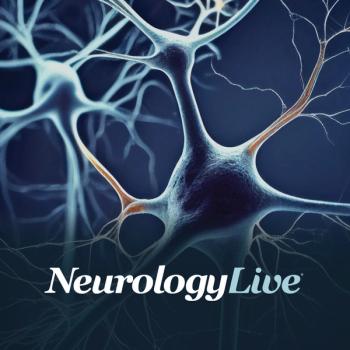
Positive Impact of Ataluren on Walking Ability in Duchenne Muscular Dystrophy: Jeffrey M. Statland, MD
At the 2023 AAN Annual Meeting, the neuromuscular disease specialist and professor of neurology at the University of Kansas Medical Center talked about the phase 3 study investigating ataluren for Duchenne muscular dystrophy. [WATCH TIME: 5 minutes]
WATCH TIME: 5 minutes
“There have been several clinical trials of ataluren in Duchenne muscular dystrophy, including a prior phase 2 and phase 3 study. We've learned a lot from the data in those studies, including about this new therapeutic that may be important for these boys. But also, we learned a lot about outcome measures designing the clinical trials.”
Duchenne muscular dystrophy (DMD), a severe
The results were recently presented by Jeffrey Statland, MD, at the
There were significant differences compared with placebo, observed in mean 6-minute walk distance (6MWD) in both the intent-to-treat (ITT) population (ataluren, n = 183; placebo, n = 176) and the subgroup of boys with 300 m to 400 m 6MWD (ataluren, n = 86; placebo, n = 83). The change from baseline and rate of change supported ataluren in the ITT population (14.4 m; 0.20 m per week; P = .0248) and 300 m to 400 m 6MWD subgroup (24.2 m; 0.34 m per week; P = .0310).
Statland, a professor of neurology at the University of Kansas Medical Center in Kansas City, Kansas, sat down with NeurologyLive® in an interview at the meeting to discuss the objective of the phase 3 study. He also talked about the logistical challenges the study overcame involving participant recruitment during the COVID-19 pandemic, as well as key findings regarding the effect of ataluren on walking ability in boys with DMD.
REFERENCES
1. McDonald CM, Wu S, Gulati S, et al. Safety and Efficacy of Ataluren in nmDMD Patients from Study 041, a Phase 3, Randomized, Double-Blind, Placebo-Controlled Trial. Presented at: AAN Annual Meeting; April 22-27, 2023; Boston, MA. Clinical Trials Plenary Session.
Newsletter
Keep your finger on the pulse of neurology—subscribe to NeurologyLive for expert interviews, new data, and breakthrough treatment updates.


































